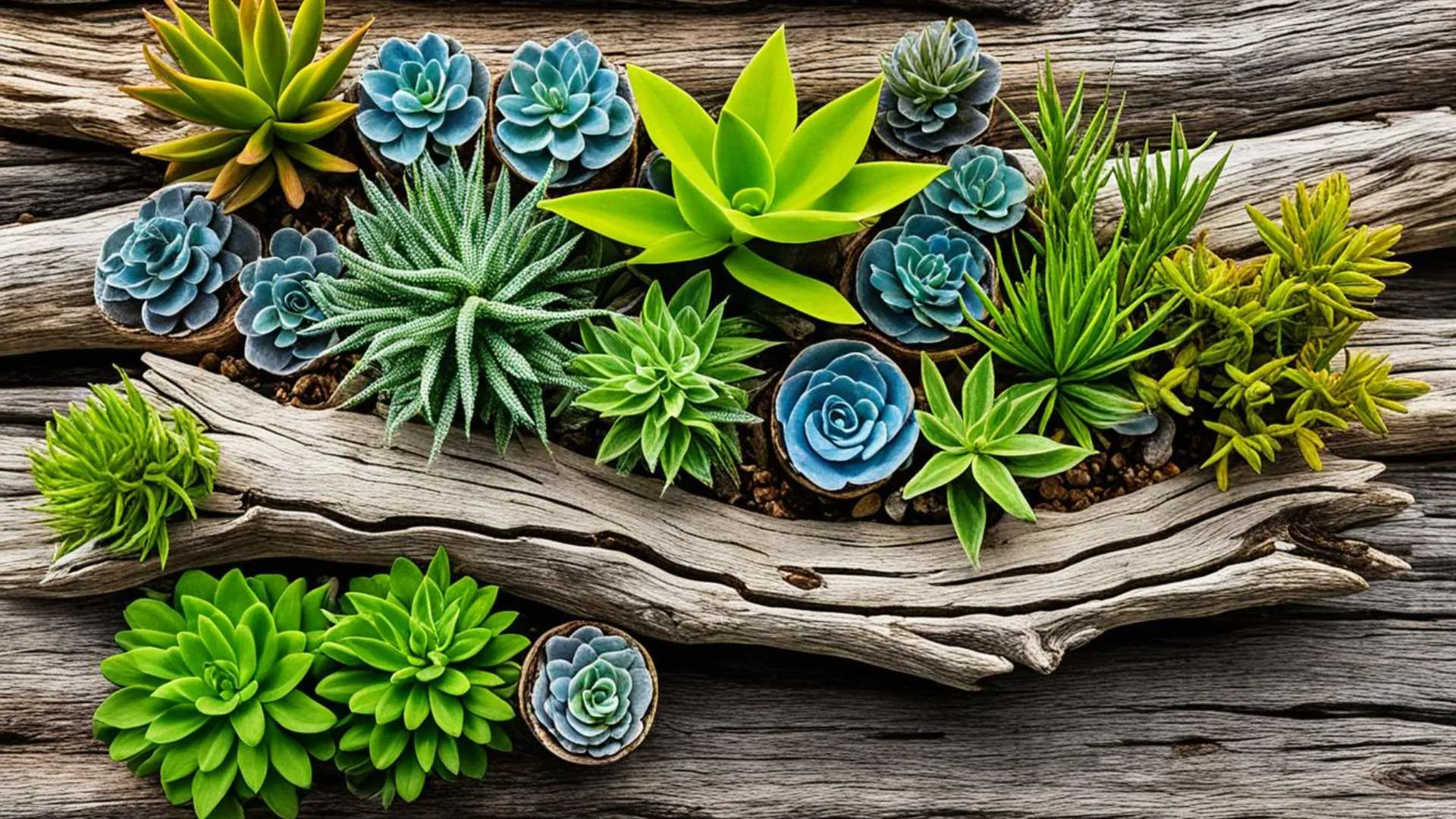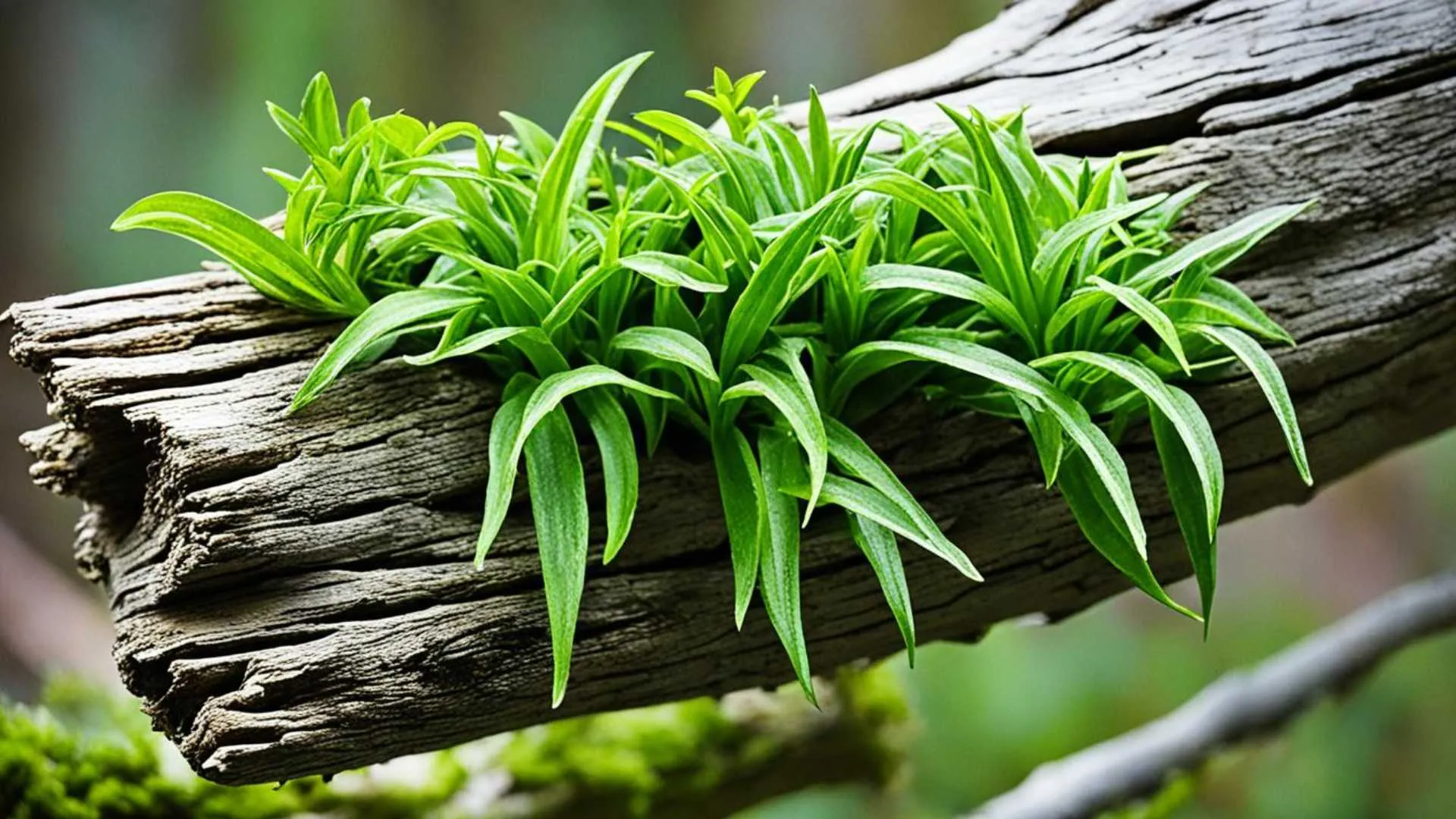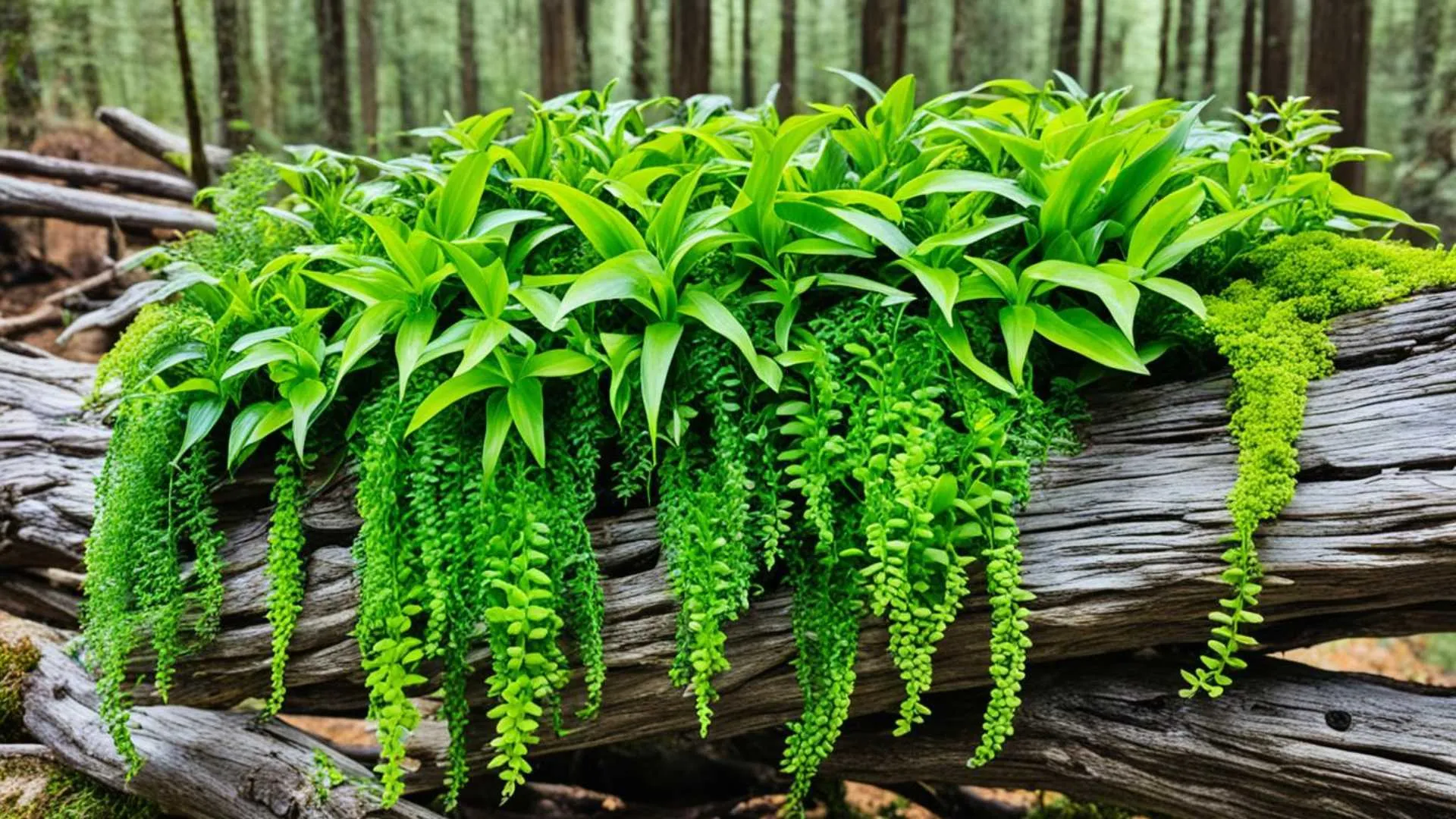Easy Guide to Attaching Plants to Driftwood
POSTED ON FEB 24, 2024

Do you want to create a mesmerizing underwater or terrarium paradise? Are you wondering how to attach plants to driftwood seamlessly? Look no further! We have the ultimate guide that will unravel the secrets to effortlessly attaching plants to driftwood, transforming it into a natural and captivating centerpiece for your aquarium or terrarium.
Whether you are a seasoned aquarist or a beginner enthusiast, this comprehensive guide will equip you with easy-to-follow steps, expert tips, and indispensable know-how to bring your aquatic or terrestrial habitat to life by harnessing the beauty of plants attached to driftwood.
Key Takeaways:
• Discover why attaching plants to driftwood is beneficial for your aquarium or terrarium setup.
• Learn how to choose the right plants that thrive on driftwood and enhance the visual appeal of your underwater or terrestrial landscape.
• Explore techniques for preparing and cleaning driftwood to create an ideal foundation for plant attachment.
• Uncover various methods and materials for securely attaching plants to driftwood, ensuring their continued growth and stability.
• Master the art of caring for plants attached to driftwood, maintaining their health and vitality for a thriving habitat.
Why Attach Plants to Driftwood?
Before we dive into the process of attaching plants to driftwood, let's explore why this method is beneficial. Attaching plants to driftwood not only adds a touch of natural beauty to your aquatic or terrestrial setup but also provides additional support for the plants, allowing them to thrive and grow healthily.
When you attach plants to driftwood, you create a stunning visual effect that mimics the natural habitat of aquatic plants found in rivers and streams. The combination of the wood's texture and the lush greenery of the plants creates a captivating focal point in your aquarium or terrarium.
Furthermore, attaching plants to driftwood offers practical advantages. With traditional substrate planting, plants may become uprooted due to the movement of fish, flowing water, or natural decay. By securing them to driftwood, you minimize the risk of plants being dislodged, ensuring that your underwater or terrestrial garden remains intact and visually appealing.
By providing additional support to the plants, attaching them to driftwood can also promote their growth and overall health. The wood acts as an anchor, allowing the plants to establish their roots and absorb essential nutrients from the water or substrate. This attachment method encourages robust growth and prevents the plants from floating or becoming root-bound.
There are various plant attachment methods for driftwood, each offering distinct advantages depending on your setup and aesthetic preferences. In the following sections, we will explore different techniques and provide step-by-step instructions to help you securely attach plants to driftwood.
Now that we understand the benefits of attaching plants to driftwood, let's dive into the practicalities of choosing the right plants for attachment. In the next section, we will discuss the best plant species for driftwood attachment and share tips for successful plant growth and attachment.
Choosing the Right Plants for Driftwood Attachment

Before you begin attaching plants to driftwood, it's important to select suitable plant species. The type of plants you choose will determine the overall aesthetics and success of the driftwood attachment. Here are some best practices and tips to help you make the right choices:
1. Consider the Compatibility:
When selecting plants for driftwood attachment, it's crucial to consider their compatibility with the driftwood environment. Choose plants that can thrive in the specific conditions of your aquarium or terrarium, such as lighting, temperature, and water parameters. This will ensure the long-term health and growth of the attached plants.
2. Opt for Epiphytic Plants:
Epiphytic plants are the best choice for attaching to driftwood as they naturally grow on other surfaces, such as trees or rocks. These plants have specialized structures that enable them to attach and absorb nutrients from the air or water. Some popular epiphytic plants for driftwood attachment include Java Fern (Microsorum pteropus), Anubias (Anubias spp.), and Bolbitis (Bolbitis heudelotii).
3. Size and Growth Habit:
Consider the size and growth habits of the plants you choose for driftwood attachment. Ensure that the plants are proportional to the size of your driftwood and won't overshadow or overcrowd other elements in your tank. Additionally, select plants with manageable growth rates to avoid excessive maintenance and trimming in the future.
4. Root Structure:
Plants with extensive root systems may not be suitable for driftwood attachment, as the roots can become entangled or cause damage to the wood. Instead, opt for plants with small or compact root structures that can easily cling or attach to the driftwood surface. Mosses, such as Java Moss (Taxiphyllum barbieri) or Christmas Moss (Vesicularia montagnei), are excellent choices due to their flexible and adhesive nature.
5. Compatibility with Tank Mates:
Consider the compatibility of the plants with your other tank inhabitants, such as fish or invertebrates. Some species may nibble on or damage certain plants, which could affect their attachment to driftwood. Research the behavior and preferences of your tank mates to ensure a harmonious environment for all inhabitants.
6. Maintenance Requirements:
Lastly, consider the maintenance requirements of the plants. Some species may require specific care, such as regular fertilization or pruning, to sustain their attachment to the driftwood. Choose plants that align with your desired level of maintenance commitment to ensure a thriving and visually appealing display.
By following these best practices and tips, you can confidently select the right plants for driftwood attachment. The next section will guide you through the necessary preparation and cleaning steps to ensure a successful plant attachment process.
Preparation and Cleaning of Driftwood
Before attaching plants to driftwood, it's essential to properly prepare and clean the driftwood. This ensures a favorable environment for plant attachment and promotes the overall health and longevity of your plants.
Gather the necessary materials
To prepare driftwood for plant attachment, you will need the following:
• Bristle brush
• Aquarium-safe bleach or hydrogen peroxide
• Container or tub large enough to submerge the driftwood
• Clean water Towel or cloth
Step-by-step driftwood preparation
1. Begin by removing any loose debris or dirt from the driftwood using a bristle brush. This helps ensure a clean surface for plant attachment.
2. Fill a container or tub with clean water and submerge the driftwood. Allow it to soak for 24 to 48 hours. This soaking process helps remove tannins and other impurities from the wood, preventing discoloration in your aquarium or terrarium. You can also boil the driftwood to make it fast.
3. After soaking, remove the driftwood from the water and examine it for any remaining dirt or debris. Use the bristle brush to gently scrub away any stubborn residue.
4. Rinse the driftwood thoroughly with clean water to remove any remaining debris or cleaning solution.
5. Dry the driftwood completely using a towel or cloth. Ensure there is no excess water as it can create a breeding ground for mold and bacteria.
Once the driftwood is prepared and cleaned, it's ready for plant attachment. Following these steps ensures a suitable environment for your plants to thrive and enhances the aesthetic appeal of your aquarium or terrarium.
Attaching Plants to Driftwood

In this section, we will explore various techniques and methods for attaching plants to driftwood to create a stunning and natural aesthetic in your aquarium or terrarium. Whether you're a seasoned plant enthusiast or new to the world of aquascaping, these easy and effective plant attachment ideas for driftwood will help you achieve a visually captivating display.
1. Using Fishing Line or Plant Ties
One of the easiest and most commonly used methods to attach plants to driftwood is by using fishing lines or plant ties. Simply wrap the fishing line or ties around the base of the plant and secure it to the driftwood. Make sure to tie it firmly but not too tight to avoid damaging the plant. This method provides stability and allows the plant's roots to grow around the driftwood for a secure hold.
2. Utilizing Adhesive Substances
If you prefer a more adhesive approach, you can use plant-safe adhesive substances to attach plants to driftwood. Be cautious and choose an adhesive specifically designed for aquarium or terrarium use, ensuring it is safe for your plants and aquatic inhabitants. Apply a small amount of the adhesive to the base of the plant and press it firmly onto the driftwood. Allow sufficient time for the adhesive to dry and bond the plant securely.
Remember to research and select adhesive substances that are non-toxic, as the health and safety of your aquatic or terrestrial pets should always be a priority.
3. Incorporating Moss or Java Fern
Moss and Java Ferns are popular plant species often used for driftwood attachment. With their natural ability to attach and grow on various surfaces, including driftwood, they provide an effortless yet visually appealing way to enhance the aesthetics of your aquarium or terrarium. Simply tie sections of moss or Java Fern to the driftwood using fishing lines or plant ties, allowing them to take root and thrive. By incorporating moss or Java Fern, you can add texture, depth, and a touch of greenery to your driftwood arrangement.
With these easy ways to attach plants to driftwood, you can create a beautiful and natural habitat for your aquatic or terrestrial pets. Experiment with different techniques and methods to find the one that suits your preference and achieve the desired visual impact.
Caring for Plants Attached to Driftwood
Now that you have successfully attached your plants to the driftwood, it's important to provide them with proper care to ensure their continued growth and well-being. By following these best practices, you can maintain a thriving and visually captivating display in your aquarium or terrarium.
1. Lighting and Water Conditions
Ensure that your plants receive the appropriate amount of light and water for their specific needs. Consider the lighting requirements of the plants you have attached to the driftwood and provide them with the necessary light intensity and duration. Additionally, monitor the water conditions, including temperature, pH levels, and nutrient content, to create an optimal environment for plant growth.
2. Regular Pruning
Regularly prune your plants to maintain their shape and prevent overgrowth. Trimming excessive foliage helps redirect energy towards healthy growth and encourages the development of new leaves and shoots. Be careful not to disturb the attachment points while pruning.
3. Fertilization
Supplement the nutrient requirements of your plants by fertilizing them appropriately. Choose a high-quality liquid or substrate fertilizer and follow the recommended dosage instructions. Be cautious not to over-fertilize, as it can lead to nutrient imbalances or algae growth. Monitor the plants' response to fertilization and adjust accordingly.
4. Maintenance and Cleaning
Regularly inspect the driftwood and attached plants for any signs of pests or diseases. Remove any dead or decaying plant matter promptly to prevent the spread of harmful bacteria or fungi. Gently clean the driftwood surface to remove algae or debris using a soft brush or cloth. Avoid using chemicals that may harm the plants or aquatic life.
Remember to observe your plants closely and make adjustments as needed based on their health and growth. With proper care and attention, the plants attached to the driftwood will continue to thrive and enhance the natural beauty of your aquarium or terrarium.
5. Troubleshooting
If you notice any issues with your attached plants, such as yellowing leaves, stunted growth, or signs of disease, it's essential to take prompt action. Research the specific plant species and identify potential causes for the problem. Make any necessary adjustments to the lighting, water conditions, or fertilization regimen to address the issue. Consult with experienced aquarium or terrarium enthusiasts or seek advice from knowledgeable professionals if needed.
Conclusion
By following this easy guide, you can confidently attach plants to driftwood, creating a visually captivating and natural habitat for your aquatic or terrestrial pets. The process of attaching plants to driftwood not only adds beauty to your aquarium or terrarium but also provides additional support for the plants, helping them grow healthily.
ARE YOU INTERESTED IN DRIFTWOOD DECOR?
If you have projects that need driftwood ideas, don't hesitate to contact us.
© 2023 DB Texas Driftwood Artists
